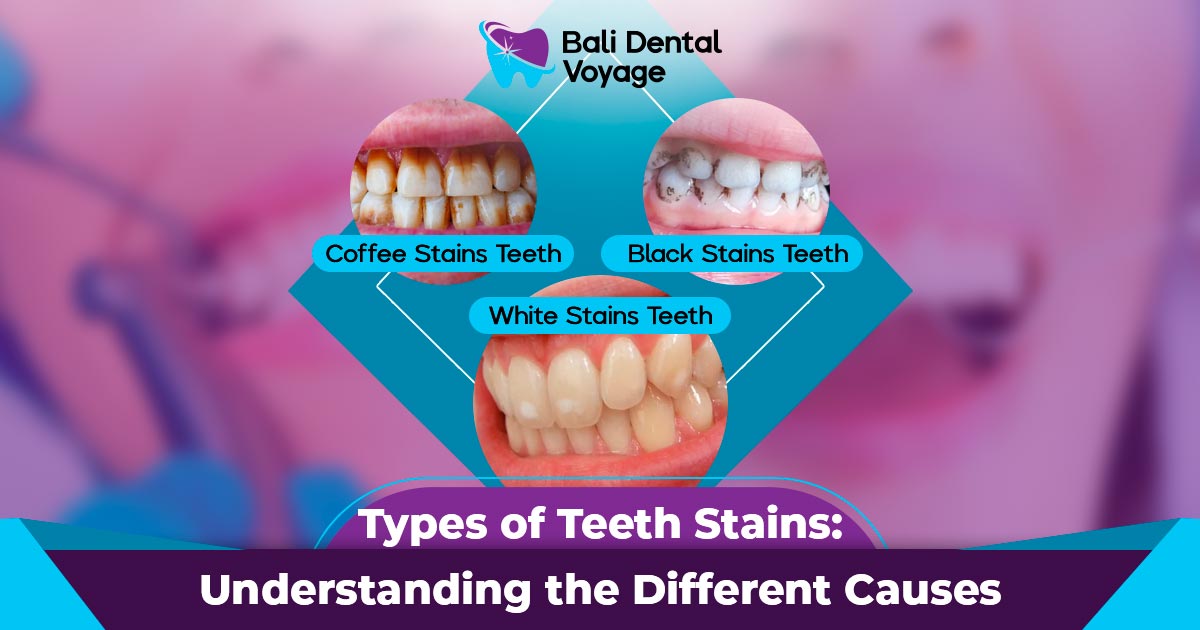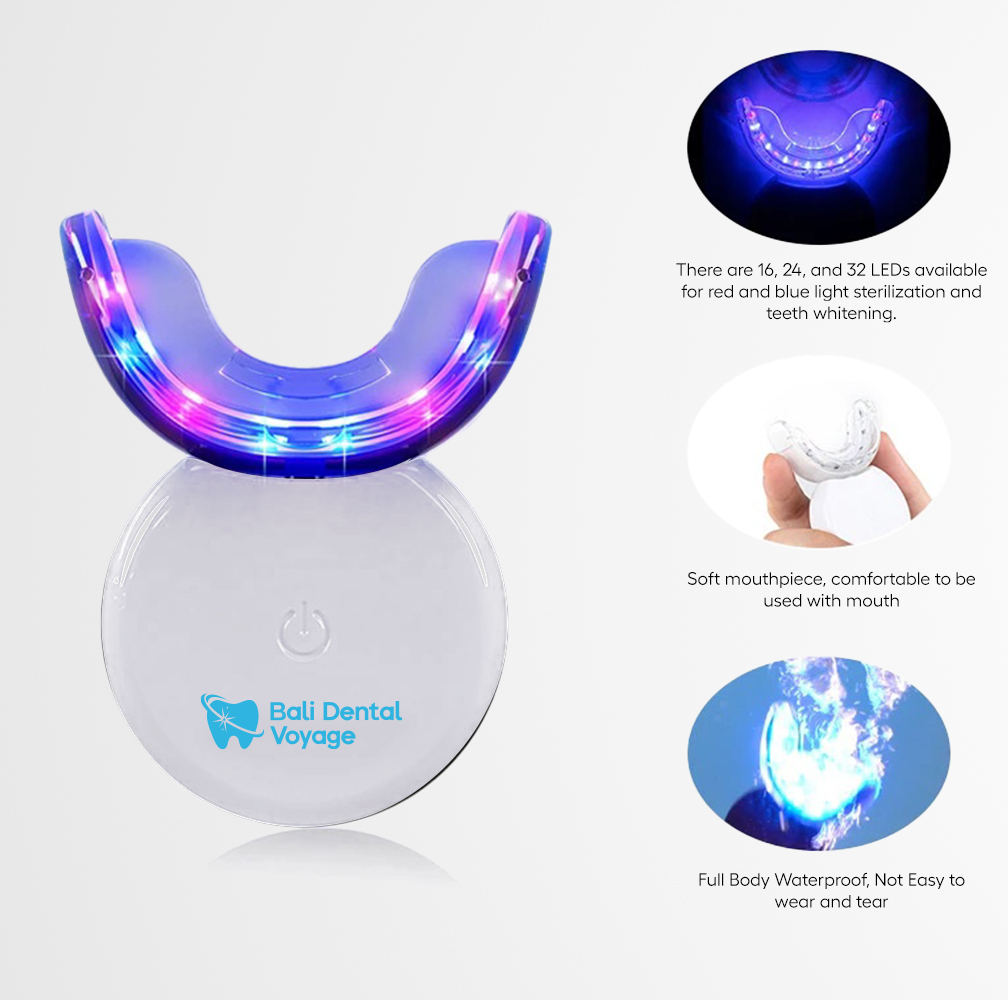
A bright, confident smile can leave a lasting impression on others. However, tooth discolouration can dampen the radiance of your smile, leading to self-consciousness and discomfort.
Table of contents:
- Causes of Tooth Discolouration
- Treatment Options for Tooth Discolouration
- Preventing Tooth Discolouration
- Embrace Your Bright Smile
- Preparing for Teeth Whitening
Understanding the causes, available treatments, and prevention methods for tooth discolouration is crucial in maintaining a healthy and appealing smile.
Causes of Tooth Discolouration
- Extrinsic Factors
Extrinsic discolourations are stains that manifest on the outer surface of the tooth enamel. These marks usually arise due to external influences, such as the foods and beverages we consume, along with our oral care practices.
Common causes include the consumption of staining substances such as:- Coffee
- Tea
- Red wine
- Certain foods
Smoking and tobacco use are also significant culprits, leaving yellowish stains on teeth. Insufficient dental hygiene habits, like irregular brushing and flossing, can lead to the buildup of plaque and the discolouration of teeth.
Additionally, some mouthwashes and medications may cause teeth to lose their natural lustre.
- Intrinsic Factors
Intrinsic tooth discolouration originates from within the tooth, affecting the dentin layer. Dental trauma, injuries, and untreated cavities can cause the tooth to darken.
Fluorosis, a condition resulting from excessive fluoride intake during tooth development, leads to discolouration and white spots. Enamel hypoplasia, a condition affecting enamel formation, can also contribute to tooth discolouration.
As we age, our teeth naturally lose their brightness, and genetic factors may also play a role in intrinsic discolouration. - Medical Conditions
Certain medical conditions can cause tooth discolouration. Dental infections can lead to darkening or greying of the affected tooth.
Tetracycline antibiotics have the potential to lead to teeth discolouration, especially when taken during the developmental years (before the age of 8). Thankfully, these stains can be effectively treated through professional teeth whitening procedures or by using veneer/bonding treatments.
Genetic conditions like Amelogenesis imperfecta (AI) and Dentinogenesis imperfecta (DI) can also affect the colour and structure of teeth.
Treatment Options for Tooth Discolouration

Professional Teeth Whitening
Professional teeth whitening procedures, carried out by dentists, offer safe and effective ways to restore tooth brightness. In-office bleaching treatments involve applying a bleaching agent directly to the teeth, which is then activated with a special light.
Alternatively, dentists may provide take-home whitening kits with custom-made trays for at-home use. Professional teeth whitening can significantly lighten teeth, enhancing the overall appearance of the smile.
Dental Veneers
Dental veneers are thin, custom-made shells made of porcelain or composite resin that are bonded to the front surface of teeth. They can effectively cover discolourations and other cosmetic imperfections.
Veneers are a popular choice for those seeking a complete smile makeover, providing a natural-looking and long-lasting solution.
Composite Bonding
Composite bonding involves the application of tooth-coloured resin to the surface of discoloured teeth, filling in cracks and chips while restoring the tooth’s appearance. This procedure, which is both non-invasive and affordable, is especially beneficial for treating minor discolourations.
Dental Crowns
Dental crowns, or caps, are used to cover severely discoloured or damaged teeth. They are custom-made to match the colour and shape of the surrounding teeth, providing a durable and aesthetically pleasing solution.
Microabrasion and Enameloplasty
Microabrasion is a gently invasive method that entails the removal of a thin enamel layer to effectively eliminate surface stains and discolourations. Enameloplasty, on the other hand, reshapes and polishes the enamel to improve the tooth’s appearance.
These procedures are suitable for certain cases of mild discolouration.
Internal Bleaching
Internal bleaching is performed on a tooth that has undergone a root canal treatment and has become discoloured from the inside. The dentist places a bleaching agent inside the tooth, effectively lightening the colour.
Nevertheless, this approach is only appropriate for certain situations and necessitates oversight from a qualified professional.
Preventing Tooth Discolouration
- Maintaining Good Oral Hygiene
Regular brushing, flossing, and using appropriate toothpaste and mouthwash can prevent the buildup of stains and plaque, maintaining the natural whiteness of teeth. - Dietary Considerations
Reducing the intake of substances that cause stains and rinsing the mouth with water after consuming them can lower the likelihood of tooth discolouration. - Tobacco and Smoking Cessation
Quitting tobacco use and smoking can improve oral health, prevent staining, and reduce the chances of experiencing other dental problems. - Fluoride and Dental Health
Ensuring an adequate intake of fluoride can strengthen teeth, making them more resistant to discolouration and decay. - Regular Dental Check-ups
Routine dental visits allow early detection of discolouration and other dental issues, enabling timely intervention and treatment.
Embrace Your Bright Smile
Tooth discolouration can significantly impact a person’s self-confidence and overall oral health. By understanding the causes, exploring available treatment options, and adopting preventive measures, you can maintain a bright and healthy smile.
Professional teeth whitening, dental veneers, composite bonding, dental crowns, microabrasion, and enameloplasty offer viable solutions for discolouration. However, prevention is always better than cure, so practice good oral hygiene, make informed dietary choices, and prioritise regular dental check-ups to ensure your smile stays radiant for years to come.
Keep in mind that a lovely smile not only has aesthetic appeal but also mirrors excellent oral health and overall well-being.
Preparing for Teeth Whitening: A Patient’s Guide
Say Goodbye to Stained Teeth with Professional Teeth Whitening in Bali
Are you tired of feeling self-conscious about your stained teeth? Let Bali Dental Voyage help you achieve a bright, confident smile with our professional teeth whitening treatment in Bali. Our state-of-the-art dental facilities and highly trained staff are dedicated to providing you with the best possible experience.
And with our convenient web-based booking system, scheduling your appointment has never been easier. Simply visit our website and select your preferred date and time. If you have any questions about our teeth whitening services or would like to learn more about how we can help you achieve a brighter smile, please don’t hesitate to contact us.
Our friendly staff is always ready to assist you. Don’t let stained teeth hold you back any longer. Contact Bali Dental Voyage today and let us help you achieve the smile of your dreams.




